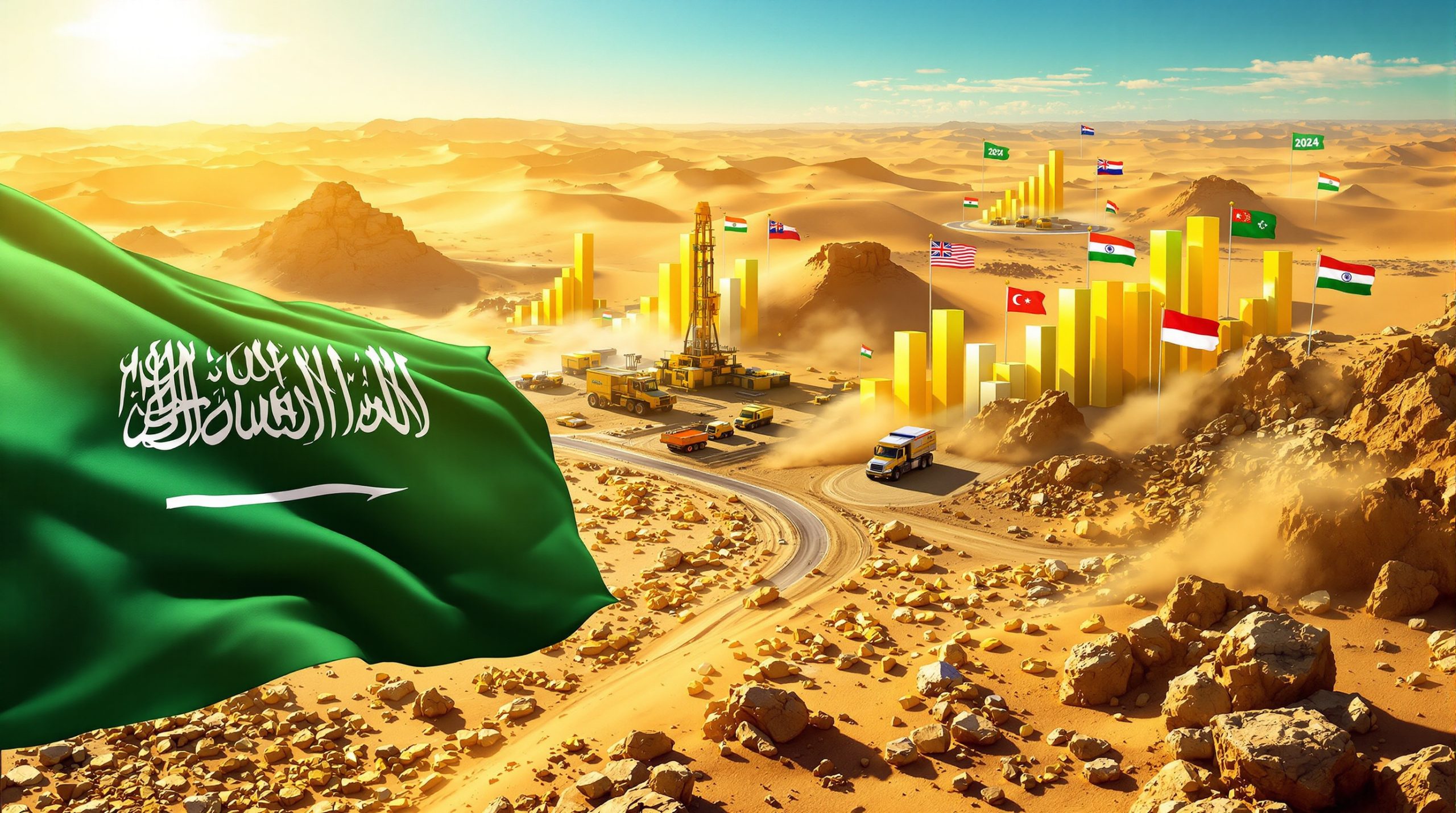Queensland's Strategic Mining Initiatives in the North-West Region
The north-west region of Queensland is experiencing a significant revitalization of its mining sector through strategic government initiatives aimed at unlocking mineral potential and stimulating economic growth. These initiatives focus on infrastructure improvements, innovative resource management, and streamlined regulatory processes to position Queensland as a competitive player in global mineral markets.
The Economic Significance of North-West Queensland's Mineral Resources
North-west Queensland sits on a treasure trove of mineral wealth, historically serving as one of Australia's most productive mining regions. The area is particularly rich in copper, phosphate, and gold deposits, with emerging opportunities in critical minerals essential for copper clean energy shift technologies and advanced manufacturing.
Despite this natural abundance, the region has faced challenges in recent years with aging infrastructure and maturing mines reaching the end of their productive life cycles. The Mt Isa underground copper mine, for instance, is scheduled to close in July 2025, creating both challenges and opportunities for economic transition.
The Queensland Government's strategic vision aims to breathe new life into this vital economic region through targeted investments and policy reforms that address infrastructure bottlenecks while promoting sustainable resource development.
Queensland's Three-Pronged Approach to Mining Development
The state government has implemented a comprehensive strategy built around three key pillars that work in concert to revitalize the mining sector:
-
Rail infrastructure incentives – Reducing transportation costs to improve operational viability for mineral producers, particularly in the phosphate sector.
-
Innovative resource utilization – Facilitating access to previously processed resources through agreements like the Glencore copper tailings initiative.
-
Streamlined regulatory processes – Establishing the Resources Cabinet Committee to expedite approvals for strategic projects like the Eva copper development.
This multifaceted approach recognizes that modern mining success requires not just geological potential but also efficient logistics, innovative resource management, and responsive governance frameworks.
How Will Rail Infrastructure Incentives Transform Phosphate Production?
Understanding the Mt Isa Rail Line Incentive Package
The Queensland Government, through Queensland Rail, has introduced a significant incentive package specifically targeting phosphate producers utilizing the Mt Isa rail line. This initiative substantially reduces access charges, creating immediate cost savings for both established operations and emerging producers in the phosphate sector.
The rail incentives are strategically designed to overcome one of the most significant barriers to mineral development in remote regions – transportation costs. By lowering these expenses, previously marginal deposits become economically viable, and existing operations can extend their productive lifespans.
Queensland Rail's involvement demonstrates the government's whole-of-system approach to mineral development, recognizing that mine viability depends not just on resource quality but also on the efficiency of the entire supply chain.
Global Phosphate Market Dynamics and Queensland's Opportunity
The timing of these rail incentives aligns perfectly with robust global demand for phosphate, primarily driven by its essential role in agricultural fertilizers. With global food security concerns intensifying and agricultural productivity becoming increasingly critical, phosphate remains a strategically important mineral commodity.
North-west Queensland's phosphate resources are particularly valuable due to their quality characteristics and relative accessibility. With improved transportation economics through the rail incentives, Queensland producers can better compete with international suppliers while serving both domestic agricultural needs and export markets across the Asia-Pacific region.
The rail incentives effectively position Queensland to capture a larger share of the growing global phosphate market while supporting Australia's agricultural productivity and food security objectives.
Industry Reception and Economic Impact Assessment
The Association of Mining and Exploration Companies (AMEC) has provided strong endorsement of the rail incentive program. AMEC CEO Warren Pearce described the initiative as "a sensible step to increase exports and incentivize expansion of this important commodity," highlighting the practical value of the government's approach from an industry perspective.
This positive reception from the industry's peak body reflects confidence that the incentives will deliver real economic benefits. By reducing operational costs, the program allows producers to reinvest savings into expansion activities, exploration, and workforce development, creating a multiplier effect throughout the regional economy.
The economic impact extends beyond direct mining operations to include enhanced activity across transportation services, equipment supply, maintenance contractors, and local service businesses throughout north-west Queensland.
What Does the Glencore Agreement Mean for Copper Mining's Future?
Innovative Tailings Access Agreement: Breaking New Ground
In a landmark development for resource optimization, the Queensland Government has secured an agreement with Glencore to allow third-party access to copper tailings from the Mount Isa Mines site. This innovative arrangement represents a shift toward more circular resource economics in the mining sector trends.
The copper tailings, which contain valuable mineral content that was previously uneconomical to recover, now present a significant opportunity for resource extraction using modern processing technologies. This approach effectively creates a new mineral resource without requiring additional mining activity, delivering both economic and environmental benefits.
The timing of this agreement is particularly strategic given the upcoming closure of the Mt Isa underground copper mine in July 2025, providing continuity of copper production through alternative means.
Transition Planning for Mt Isa's Copper Operations
Beyond the tailings agreement, Glencore is undertaking a comprehensive evaluation of its copper processing assets in Queensland. The company is currently assessing options for the Mt Isa copper smelter and Townsville copper refinery amid challenging global market conditions for copper processing.
In parallel with these assessments, Glencore is advancing its Black Star open-cut project through mining feasibility insights. This project represents a potential next phase of primary copper production at the Mt Isa site, complementing the tailings reprocessing initiative.
This multifaceted approach to transition planning demonstrates the complexity of maintaining a viable copper industry in the region, requiring coordination between mining operations, processing facilities, and downstream supply chains.
Government Advocacy for Copper Operations
Queensland Natural Resources and Mines Minister Dale Last has prioritized the future of Mount Isa's copper processing infrastructure as "the number one issue" on his ministerial agenda. This high-level attention underscores the strategic importance of maintaining downstream processing capabilities within Queensland.
The minister has engaged directly with Glencore CEO Gary Nagle through multiple meetings and maintained ongoing discussions with the company to advocate for continued smelter operations. This direct ministerial engagement demonstrates the government's commitment to preserving critical links in the mineral processing value chain.
By working collaboratively with industry, the government aims to secure both immediate continuity for existing operations and long-term investment in the next generation of copper processing technology for north-west Queensland.
How Is the Eva Copper Project Being Fast-Tracked?
Resources Cabinet Committee: A New Approach to Project Approval
The Queensland Government has established a dedicated Resources Cabinet Committee with the specific mandate of expediting approvals and removing bureaucratic obstacles for strategic mining projects. This committee represents a significant innovation in regulatory governance for the resources sector.
For Harmony Gold's Eva copper project, the committee is providing targeted assistance to navigate remaining approval requirements and access essential information needed to progress toward construction. This coordinated approach streamlines interactions with multiple government agencies that would typically require separate, sequential processes.
The committee's intervention specifically addresses a common industry complaint about regulatory complexity and approval delays that can significantly impact project economics, especially for new market entrants or international investors unfamiliar with Queensland's regulatory landscape.
Eva Copper Project: Technical Profile and Economic Potential
The Eva copper project stands to become the largest copper mine in north-west Queensland, representing a transformative economic opportunity for the region. With substantial copper resources and favorable development characteristics, the project is positioned to make a significant contribution to Queensland's mineral output.
When operational, Eva will create hundreds of direct jobs across the full range of mining occupations, from equipment operators to engineers, geologists, and environmental specialists. These high-quality employment opportunities will support families throughout the region and attract skilled workers to north-west Queensland.
The project's economic footprint will extend well beyond direct employment to include extensive supply chain engagement, from specialized equipment suppliers to transportation services, maintenance contractors, and local businesses providing goods and services to the operation and its workforce.
Overcoming Greenfield Development Challenges
AMEC's Warren Pearce has highlighted the significance of government support for the Eva copper project, noting the particular challenges associated with establishing greenfield resource projects in Queensland. His industry perspective underscores the value of the Resources Cabinet Committee's targeted assistance approach.
Greenfield projects typically face more complex approval processes than expansions of existing operations, dealing with baseline environmental studies, infrastructure development, stakeholder engagement, and regulatory requirements across multiple jurisdictions. The committee's focused support helps navigate these complexities more efficiently.
By reducing the time and cost burdens associated with project approval, the government effectively improves the economics of the Eva project, making it more attractive for investment while accelerating the delivery of economic benefits to the region.
What Are the Regional Economic Benefits Beyond Mining Operations?
Supply Chain and Service Industry Growth Opportunities
The mining initiatives in north-west Queensland create substantial opportunities for businesses throughout the regional supply chain. From heavy equipment maintenance to technical services, transportation logistics, and professional consultancies, the mining sector drives demand across diverse business categories.
The focus on rail infrastructure improvements strengthens not only mining economics but also enhances the viability of other industries dependent on efficient transportation networks. Agricultural producers, tourism operators, and general freight businesses all benefit from more competitive rail services in the region.
As mining operations expand and modernize, they create opportunities for innovation among local suppliers. Companies providing environmental monitoring services, automation technologies, and specialized maintenance capabilities can develop expertise that becomes exportable to other mining regions.
Workforce Development and Skills Investment
The combined effect of these mining initiatives will generate significant employment opportunities across various skill levels and occupational categories. From entry-level positions to highly specialized technical roles, the sector provides career pathways for regional residents.
Mining operations typically invest heavily in workforce training and skills development, with benefits extending beyond the immediate employment relationship. Workers gain transferable skills in areas like equipment operation, maintenance, safety management, and environmental compliance that enhance overall regional workforce capabilities.
Educational institutions in the region can align their programs with industry needs, creating pathways from education to employment for local youth while providing upskilling opportunities for existing workers transitioning between roles or sectors.
Community Infrastructure and Regional Development
Mining activity generates substantial revenue streams for both local governments and the state, supporting investment in community infrastructure and services. Roads, water systems, educational facilities, and healthcare services all benefit from the economic activity generated by the mining sector.
The presence of stable, well-paying jobs helps maintain population levels in regional communities, supporting local businesses and preserving the critical mass needed for community services and facilities to remain viable. This counteracts the population drift toward coastal cities that has challenged many regional communities.
Mining companies themselves often contribute directly to community development through targeted investment programs, sponsorships, and partnerships with local organizations. These corporate social responsibility initiatives complement government services to enhance regional amenity and quality of life.
How Do These Initiatives Address Sustainability and Environmental Concerns?
Environmental Innovation Through Tailings Reprocessing
The agreement to allow third-party access to copper tailings represents an environmentally progressive approach to resource management. Reprocessing tailings recovers valuable minerals from material that has already been mined, eliminating the need for additional land disturbance while reducing the environmental liability associated with tailings storage.
Modern processing technologies can extract minerals more efficiently than was possible when the material was originally processed, maximizing resource recovery from existing materials. This approach aligns with circular economy principles by obtaining maximum value from minerals already extracted from the earth.
Water conservation benefits also accrue from tailings reprocessing, as the activity can often utilize lower quality water sources and incorporate advanced water recycling systems that reduce consumption of fresh water resources in this arid region.
Balancing Development and Environmental Protection
Queensland's mining initiatives demonstrate a balanced approach that recognizes both the economic importance of resource development and the need for environmental protection. By focusing on efficiency improvements in existing operations and infrastructure rather than solely expanding the physical footprint of mining activities, the initiatives deliver economic benefits with moderated environmental impact.
The regulatory framework governing these developments incorporates modern environmental standards, requiring comprehensive management plans for water, biodiversity, air quality, and rehabilitation. These requirements ensure that short-term economic gains are not achieved at the expense of long-term environmental health.
Mining companies operating in the region increasingly incorporate ESG challenges in mining into their business models, recognizing that environmental performance affects their social license to operate, access to capital, and long-term viability in a world increasingly focused on sustainable resource development.
Future-Proofing North-West Queensland's Mining Sector
By maximizing the value extracted from existing mining sites through innovations like tailings reprocessing, these initiatives promote more sustainable utilization of Queensland's mineral resources. This approach extends the productive life of mining districts without proportional expansion of their environmental footprint.
The focus on copper and other minerals essential for renewable energy technologies and electrification positions north-west Queensland to play a vital role in the global transition to lower-carbon energy systems. This strategic alignment with emerging demand patterns helps secure long-term markets for the region's mineral production.
Investment in modern mining 4.0 innovations drives efficiency improvements that reduce energy consumption, water usage, and waste generation per unit of production. These operational improvements enhance both environmental performance and economic competitiveness in global mineral markets.
FAQ: North-West Queensland Mining Initiatives
When will the Mt Isa underground copper mine close?
The Mt Isa underground copper mine is scheduled to close in July 2025, making the new tailings access agreement particularly timely for maintaining regional economic activity and copper production capacity.
What specific minerals is north-west Queensland known for?
The region is rich in copper, phosphate, and gold, with significant potential for critical minerals development to support global technology and renewable energy sectors. These deposits have supported mining operations for decades and continue to present opportunities for development.
How will the rail incentives specifically help phosphate producers?
The incentives will reduce transportation costs, improving profit margins for producers and making it more economically viable to develop new phosphate resources that might otherwise remain unexploited due to logistics costs. This creates a more competitive cost structure for both existing and emerging producers.
What is the Resources Cabinet Committee?
This is a newly formed Queensland Government committee specifically tasked with streamlining approvals and removing bureaucratic obstacles for strategic resource projects like the Eva copper development. The committee coordinates across government departments to accelerate project timelines.
How significant is the Eva copper project to Queensland's mining sector?
Eva is positioned to become the largest copper mine in north-west Queensland, representing a major addition to the state's copper production capacity at a time when global demand for the metal continues to grow for renewable energy and electrification applications. The project will establish a new center of mining activity in the region.
North-west Queensland's mining initiatives represent a strategic approach to unlocking new opportunities while balancing economic development with environmental responsibility. Through targeted infrastructure investments, innovative resource agreements, and streamlined regulatory processes, the Queensland Government has created a framework for sustainable growth in this mineral-rich region.
Looking for Early Trading Opportunities in Newly Discovered Mineral Deposits?
Discovery Alert's proprietary Discovery IQ model turns complex ASX announcements into actionable investment insights, delivering real-time notifications on significant mineral discoveries before the broader market reacts. Explore how early investors have captured exceptional returns from historic discoveries by visiting Discovery Alert's discoveries page and begin your 30-day free trial today.




